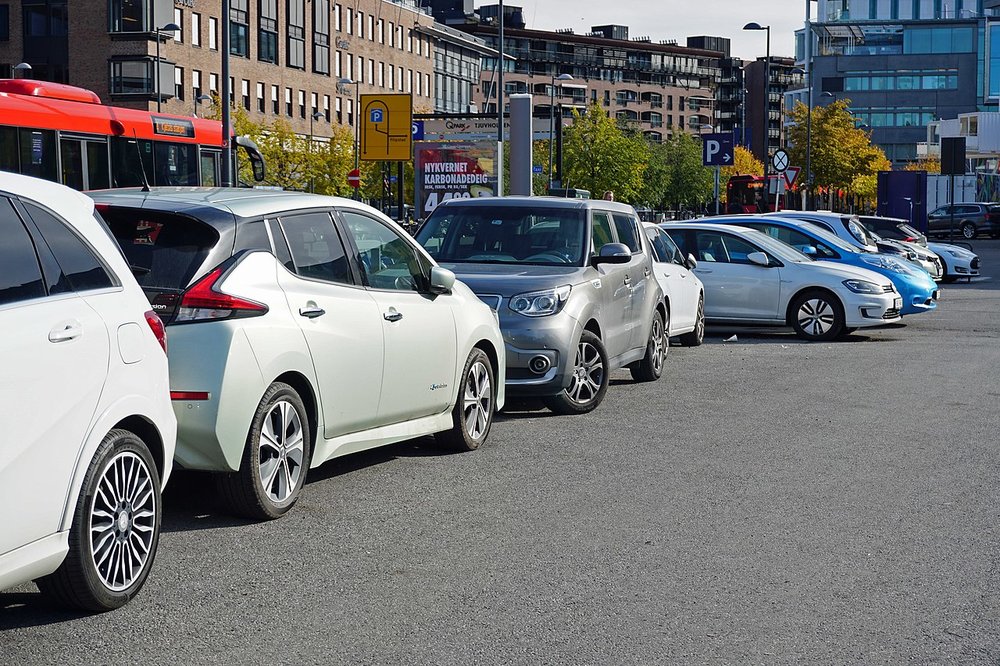Norway leads the way once again as Oslo confirms plans to introduce wireless charging to the city’s taxi ranks. Once complete it will be the first wireless fast-charging available for taxis anywhere in the world. But how viable is wireless EV charging really? Will induction plates be replacing plugs anytime soon?

The plan for Oslo
Norway has been a global leader in EV technology and adoption since 1990, and it certainly seems like they’re on the way to another milestone with the adoption of wireless charging. Under the current plan, announced by clean energy company Fortum last month, induction plates will be installed under taxi ranks around Oslo.
These plates, manufactured by US-based Momentum Dynamics and installed by Fortum, will allow cabs to charge on the job, saving valuable time for drivers and facilitating Oslo’s goal of a zero-emission taxi network by 2023.
The technology
Induction charging units work in much the same way as wireless phone chargers today, using magnetic induction between a plate on the ground and a receiver in the vehicle to charge at up to 75 kW. Momentum Dynamics reports wireless bus charging projects have achieved rates up to 200 kW, equivalent to many of the high-speed chargers currently available in Australia.

Like wireless phone chargers, these units don’t require physical contact to function. So long as the receiver mounted under the EV chassis is directly over the ground unit, the vehicle will charge.
By now the technology is quite well understood and independent reviews have shown strong potential to maintain cost- and power-efficiency. The Oak Ridge National Laboratory in Tennessee achieved 97% transfer efficiency on a 120 kW wireless charger last year, and has plans to extend their research to 200 & 350 kW chargers.
While this shows induction charging can be effective under lab conditions, real-world efficiency is slightly more ambiguous. Last year BMW announced it would offer wireless chargers with the 530e plug-in hybrid in select markets worldwide, and many outlets raised concerns about the lower reported efficiency than plug-based chargers (85% vs. 90+% for plugs). News of the wireless chargers has all but disappeared in the year since, and BMW has yet to reveal more details or extend the project to their other models.
The future
BMW’s mysterious silence, coupled with the absence of offerings from other automakers, has left a lot of uncertainty surrounding the future of wireless charging. Fortum’s announcement is the latest in a conspicuously slow drip of news about the uptake of the technology, which has led to many being unsure of where it stands.
If we assume that induction charging will make its way to consumers, and that it will be affordable & efficient (quite large assumptions), then there’s no denying it has enormous potential to change the way EVs are used worldwide.
Self-driving EVs of the future could relatively easily be set to take turns using publically-available wireless chargers without their owners, something extremely difficult for plugged systems.
The benefits aren’t restricted to owner-drivers, either. Oslo’s plan reveals the benefits of wireless charging for rideshare and taxi applications, and a number of public transport projects stand directly to gain from the increased drive-time wireless charging promises.
US-based WiTricity, a leading developer of wireless charging tech, has stated their systems are capable of bi-directional power transfer. Chargers with this capacity could allow EVs to resell energy to the grid during peak periods, potentially combating storage and overload issues that could otherwise be a major obstacle to widespread EV adoption.
So if wireless charging is so great, where is it? There are a few possibilities. It might be restrained by the concentration of patents and a lack of investment in the companies that hold them. The tech might require greater EV adoption overall to justify its expense. There might be a breakthrough on the way that producers are waiting on to begin worldwide rollout. There may be a price, efficiency, or safety issue that has yet to be ironed out.
Ultimately, only time will tell if wireless charging can genuinely replace plugs for EVs worldwide. For now, EV owners and prospective customers can rest easy knowing that plugged charging technology is available and overall charge times are going down.
You can find out more about charging options at https://jetcharge.com.au/resources/ or reach out to our technicians directly at info@jetcharge.com.au.

